by Primary Arms Staff
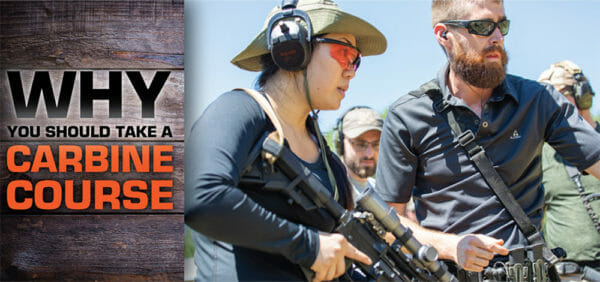
U.S.A. –-(Ammoland.com)- Over the last two decades, American gun-owners have made the AR15 the most popular rifle in the nation, dethroning the traditional bolt-action and shotgun. Specifically, defensive carbines grew to be a central interest within the shooting community, and in response, the training industry rose from relative obscurity.
We now live in the Era of the Carbine Course.
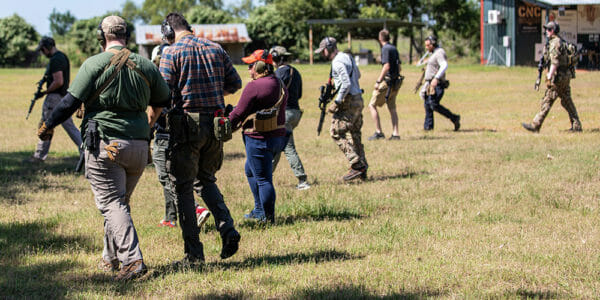
As shooters, we’re always inclined to believe we’re ahead of the curve. Often, this thinking extends to shooting practices that we’ve never trained for—self-defense included. This overestimation of ability (known as the Dunning-Kruger effect) isn’t exclusive to the shooting community either. One study reported that 90% of drivers believe their driving ability to be above average, but any survivor of big city traffic will tell you otherwise. The good news is that people who read blogs are statistically better drivers! Congratulations!
You’re also more likely to be a better gunfighter than the average American, but ‘better’ isn’t saying much. Shooting for personal protection differs greatly from shooting for groupings. Competitions and 3-gun get you a little bit closer, but a Texas Star can’t fight back, regardless of what anyone tells you. Defensive-oriented carbine skills are difficult to target and train without access to some very specific range equipment.
But even if you have access to that equipment, poor training habits will do more damage than good. Without establishing a firm understanding of the fundamentals, shooters risk training scars and negative habits that only appear when rubber meets the road. To make meaningful improvements for self-defense, you need input from an expert instructor, who can diagnose your mistakes before they become scars. This brings us to the focus of today’s article: carbine courses. If you have an AR for self-defense, here are three reasons you should sign up for a carbine course ASAP.
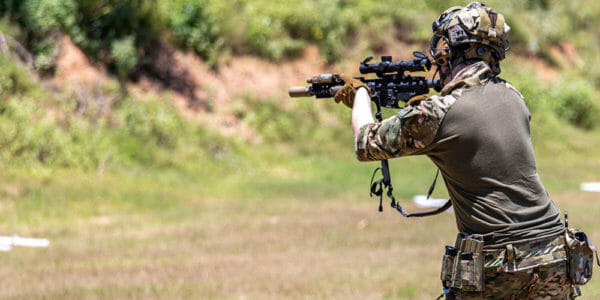
First, physical skills like shooting only develop with trial and error. By nature, humans are cautious during unfamiliar movements, and the conscious effort of moving the body impacts our situational awareness. By taking a carbine course, shooters internalize important motions and manipulations through a safe, monitored environment. The course instructor provides continuous feedback, so each repetition comes cleaner than the last. In short, carbine courses are the best environment for improving your muscle memory and shooting technique.
Second, an experienced instructor can mend training scars. Errors in technique worsen through repetition, and most shooters cannot sense their own mistakes. Sometimes, these flaws emerge only when the shooter reaches their limit, making them uniquely dangerous. Practiced instructors have the experience necessary to diagnose these scars and rectify the core problems, be it physical or mental. In this case, there is no substitute to a professional, as amateur advice risks misdiagnosis, which can exacerbate the fundamental issue.
The final reason to take a carbine course is simple: self-defense is unforgiving, and the cost of hubris is too great to ignore. Most Americans are overly optimistic towards gunfights, as their primary exposure comes through movies and television. In reality, gunfights are often quick and visceral, where simple mistakes have instantaneous consequences. While competition shooting can teach you to move and land shots on silhouettes, it cannot teach you to protect yourself from a target that might shoot back. There are insights and tactics attainable through specialized training, and that is the primary focus of most carbine courses.
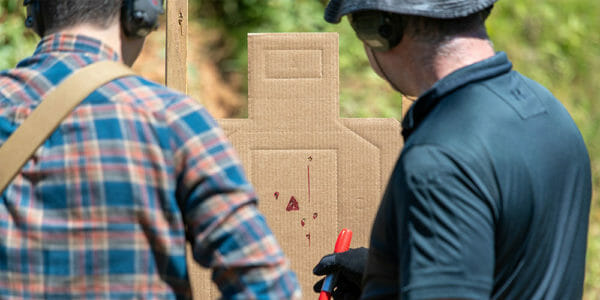
If you have never taken a carbine course, you may feel reluctant to take the plunge. Some hesitance is justified, as some (not all) carbine courses can be expensive. The good news is that everyone has felt these concerns before. It takes courage to expose yourself to coaching, but the rewards make it all worth it. Most shooters finish their first class already thinking about what they want to take next. Ultimately, great instruction should feel uplifting. Few things are more satisfying than the sense of progression which comes from completing a full 3-day course.
Never let yourself be convinced that carbine courses are only for one type of shooter. Many people see “carbine course” and imagine body armor, nightvision, and door kicking. This is simply not the case. Carbine courses tend to be very inclusive, as every student is there for improvement. Entry-level classes come with minimal expectations outside of a positive attitude and safe weapons handling. If you follow the proper class order and practice regularly, you should never face a challenge beyond your capacity. Nobody is expecting you to drive a blacked-out Tacoma under the glow of NODs on Day 1.
Some might say that courses are unnecessary, and that these skills can come with research from books, videos, and internet forums or image boards. While you might pick up on concepts, shooting is inherently a physical sport. YouTube videos cannot provide holistic improvements tailored towards your individual needs. Literary resources are an excellent supplement to your training, but practice and personalized instruction are irreplaceable.
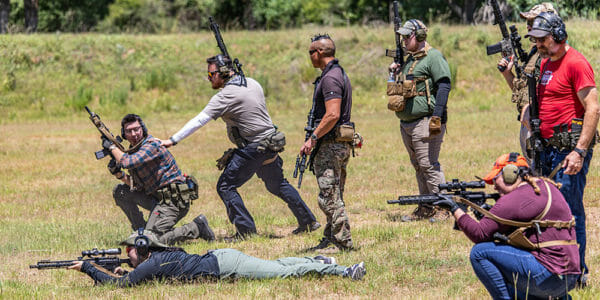
Choosing the right instructor is important. Nowadays, there are countless training groups to pick from. There are some particularly distinguished instructors whose classes are heavily coveted around the country. Some of these names include Travis Haley (Haley Strategic), Pat McNamara (TMACS Inc.), Aaron Cowan (Sage Dynamics), Kyle Defoor (Defoor Proformance Shooting), John Lovell (Warrior Poet Society), Tu Lam (Ronin Tactics), Thunder Ranch, and Rifles Only. Their records and reputations are well-known throughout the shooting community, but slots in their courses fill quickly, so many students register months in advance.
If you don’t want to travel or have a restrictive schedule, there may be more local options. Many carbine courses are still taught by regional training organizations, and they can offer great training without the waitlists or travel. The pictures in this blog come from a carbine course that Primary Arms staff took with MAST Solutions. MAST is a Texas-based training organization headed by Matthew Brockmann, pictured below.
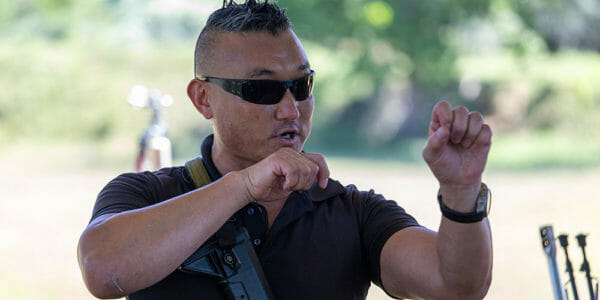
MAST may not yet be a household name like Haley Strategic, but Brockmann is an accomplished shooter and has worked with many of the top names in the training industry. The MAST team brings in some excellent talent, so the co-instructors are equally skilled and demonstrate a thorough understanding of carbine skills. Even with our mix of beginner and expert shooters, the MAST team provided excellent instruction across the board. They were friendly, courteous, and professional, despite temperatures rising above 100 degrees with 70% humidity. Houston’s climate can certainly be a cruel mistress.
Ideally, a shooter will pursue all the training possible within their budget and schedule. For most folks, this means a mix of both premier and local courses. Some shooters make the mistake of fixating too much on one specific instructor, so they end up missing out on other great learning opportunities. Our recommendation is to keep your mind open to every option. The convenience of local courses can help you to master your fundamentals before you make the investment in premier instruction. Not only will you end up a better shooter overall, but you’ll retain more of the nuance that makes top-tier coaching so desirable.
Also, be sure to do plenty of research before you sign up for a course. Read reviews. Ask them about their class sizes. Research the backgrounds of their instructors. If past students report that there’s 1 instructor in a 26-person class, maybe look somewhere else. With MAST, Brockmann brought two co-instructors in for our 12-person class. MAST’s 1:4 instructor-to-student ratio meant that everyone had plenty of time for specialized coaching.
Then, once you’ve scoped out your local groups, check out some of the high-profile names that were listed above. If one is offering a suitable class in your area, you should get your name in early, as those spots could fill in a blink.
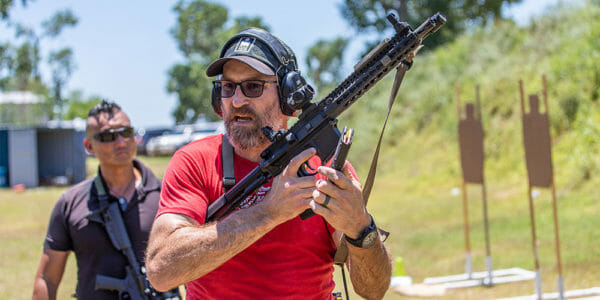
Did I mention it was over 100 degrees out?
Preparing for a Carbine Course involves more than just buying ammo and throwing on the ol’ Crye Precision Combat Pants. These courses are physical, and many instructors will continue rain or shine—especially at higher levels. There are videos of Tu Lam from Ronin Tactics teaching a room-clearing course in the middle of a blizzard. Good thing all the students came prepared.
Before you go to your course, make a checklist of essentials. Sunblock and bug spray are a must in the summer, just as jackets and gloves are in the winter. Always bring plenty of water. You will be moving around a lot, so you’re expected to sweat. If you aren’t chugging down water bottles, you’re probably not drinking enough. Hydration cannot be understated.
Also, before you go, make sure that your carbine is reliable and that you have plenty of lubricant. Rifles will break down over the course of the day, and students are expected to remedy their problems quickly to keep the group on schedule. If your carbine is finnicky, have a spare on deck or ask a buddy to bring a loaner just in case. Any rifle is better than no rifle at all.
You probably have heard the adage: 2 is 1, 1 is none. When it comes to carbine courses, live by it. Bring extra magazines, bring extra ammunition, and bring a couple speed-loaders, so you can be everyone’s hero when it comes time to load up. A good pair of boots, comfortable pants, and a set of gloves can keep you from scraping anything, but a solid sling makes a world of difference after you’ve been carrying your carbine for 8 hours.
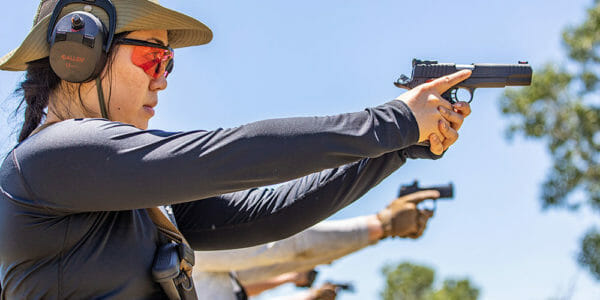
One last thing before we sign off:
Carbine courses are a heck of a lot of fun when you’re with friends.

Whatever you do, don’t skip out on a course just because you’re afraid of failure. Nothing is sillier than choosing to live in willful ignorance of mistakes you haven’t even made yet. After all, a drill can be reset, but the real deal doesn’t wait for take-two.
